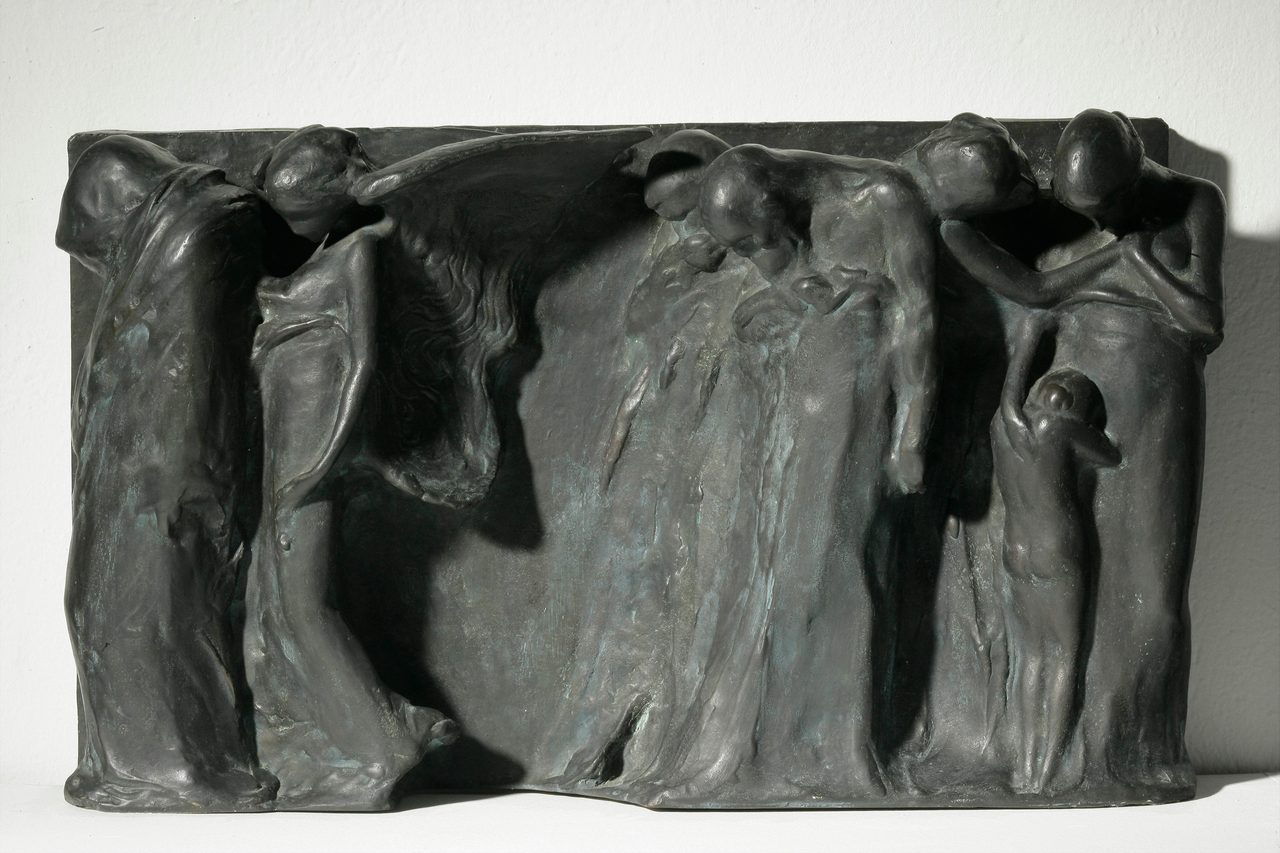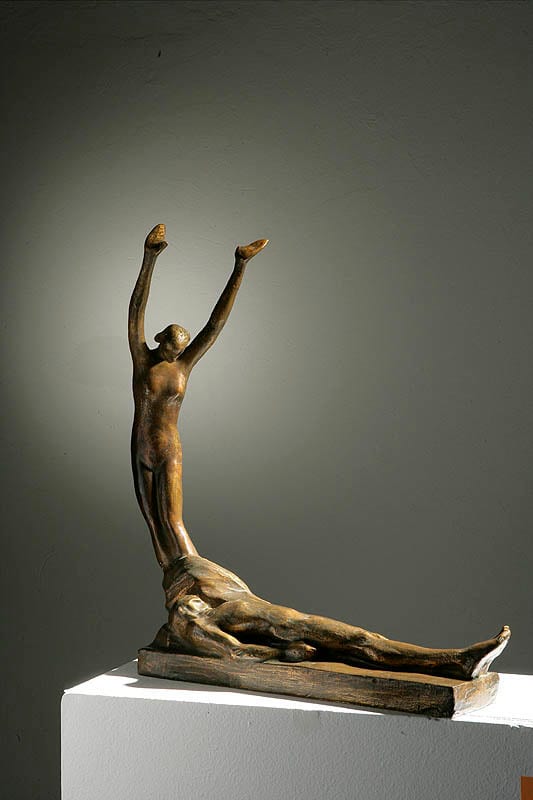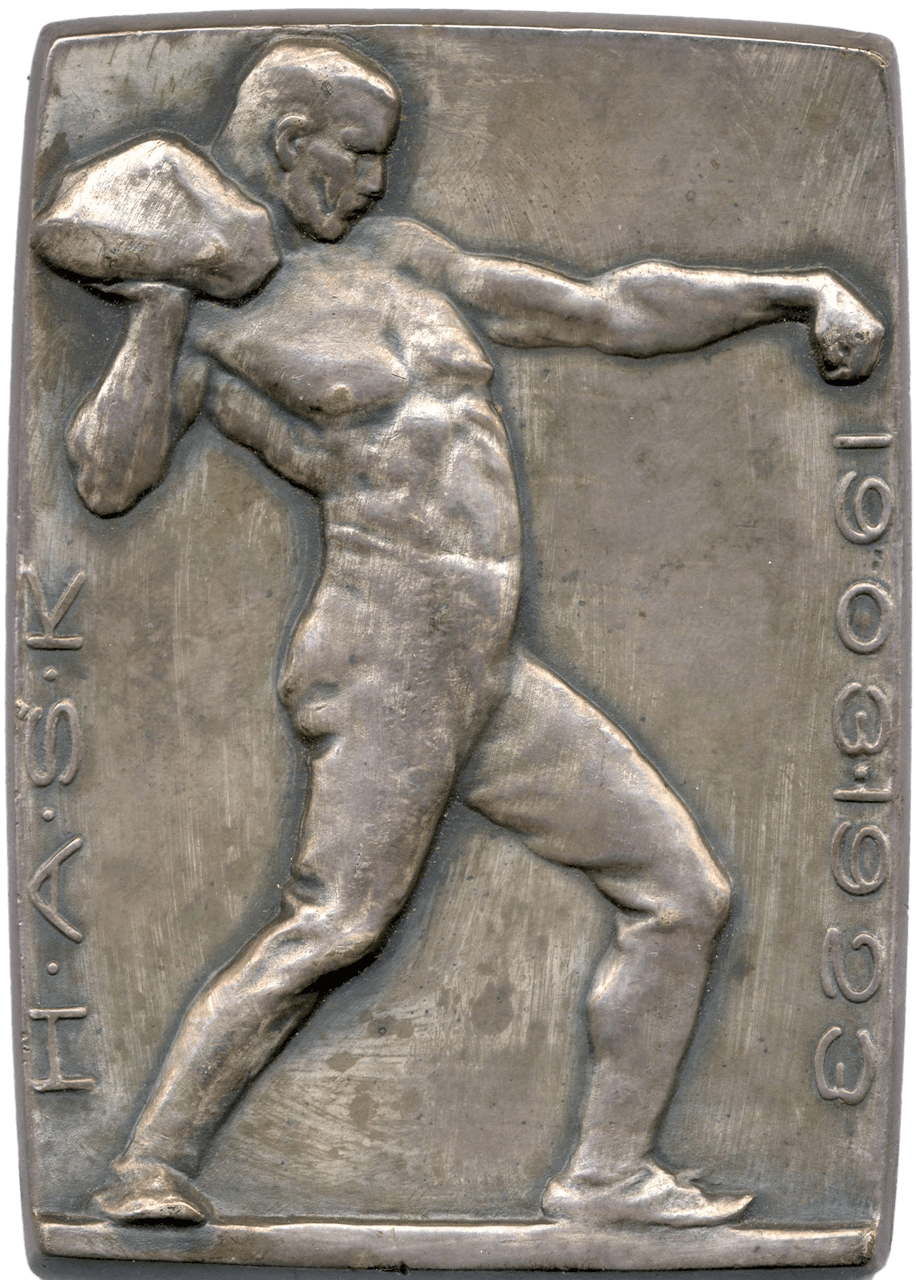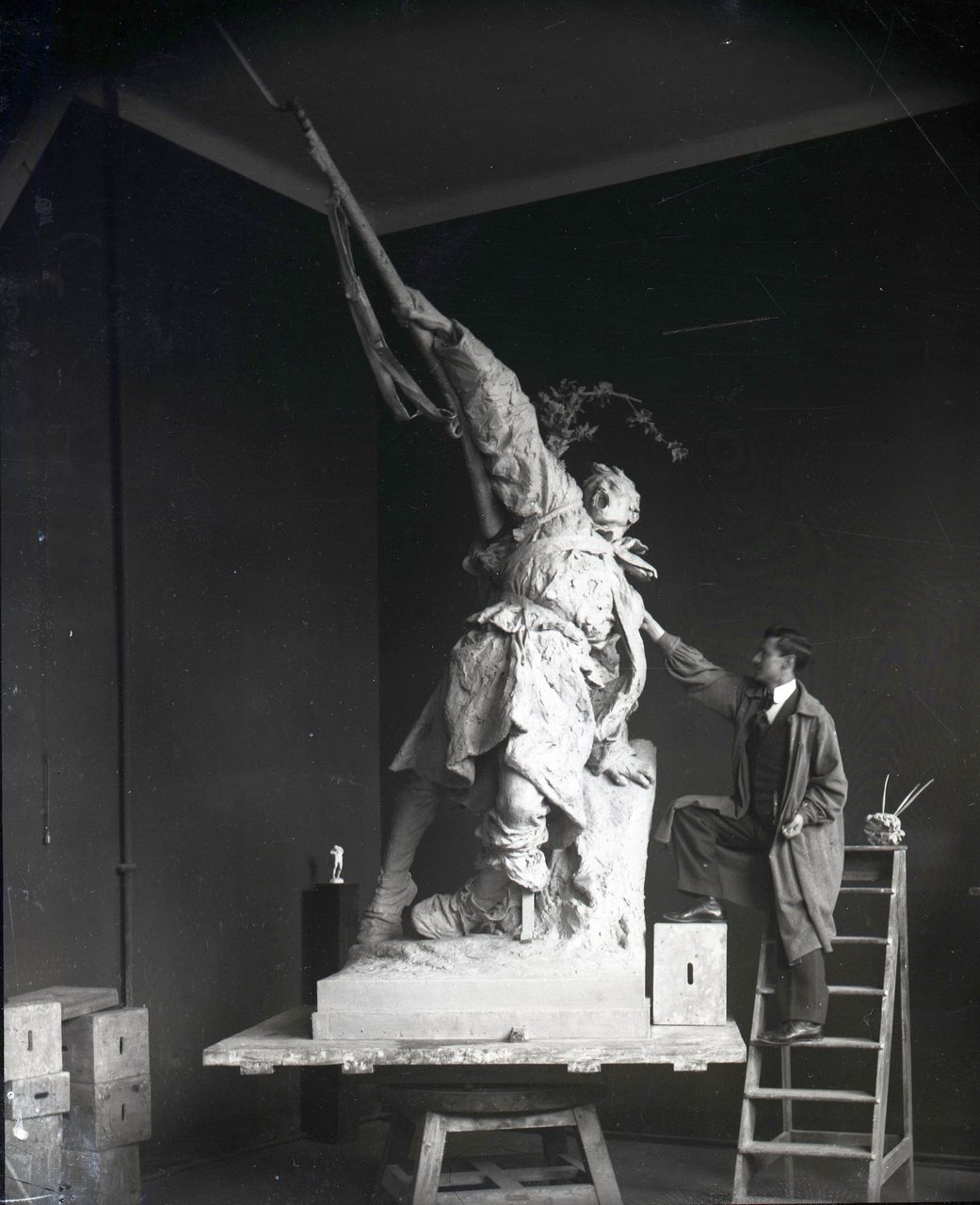Robert Frangeš-Mihanović
Robert Frangeš Mihanović is one of Croatia’s most important sculptors, one who also left his mark on European sculpting during the fin-de-siècle.

He was born on October 2, 1872, in Srijemska Mitrovica into the family of Šimun Frangeš, teacher and writer on economic subjects and Izabela Mihanović Petropoljska, the niece of Antun Mihanović, author of the Croatian national anthem. In Zagreb he did two years of the real high school, after which, in 1884, he became a pupil of the Trades (Crafts) School in Zagreb. After graduation, in 1889 Frangeš Mihanović got a scholarship to continue his training in Vienna, where, in 1894, he graduated from the Arts and Crafts College; in 1895 he also trained in the Viennese Academy of Fine Art. Since his talents had been recognised by the connoisseurs of the time and thanks to the patronage of Izidor Kršnjavi, Frangeš Mihanović departed for a study tour of Europe, and in 1900 to 1901 did further studies in Paris, where he found himself in the company of August Rodin and Medardo Rosso.
Robert Frangeš Mihanović, 1938, taken by A. Bauer
From 1895 to 1907 he taught at the Trades School in Zagreb, and from 1907 to 1940 was a professor at the Interim College for Art and Fine Craft (later the Academy of Fine Arts in Zagreb), in the establishment of which he had taken part. In 1907 he became its first director, returning to the position in 1917 / 1918.
The work of Robert Frangeš Mihanović is of great value for national art history because of the string of activities related to culture. He was, like Izidor Kršnjavi and Vlaho Bukovac, one of the key personalities involved in the artistic life of Zagreb at the turn of the century. He also took part in the founding of the Society of Croatian Artists (1897), the Lada Association (1904/1905) and the Academy of Fine Arts (1907), as well as setting up the first foundry for artworks in Zagreb. He and his sculptural pieces took part in exhibitions at home and abroad.
The creative work of Robert Frangeš Mihanović left a remarkable trace in Croatian art of the fin-de-siècle. As early as 1891, Izidor Kršnjavi, identifying his giftedness, commissioned the creation of four reliefs for the grand hall of the building of the government’s Department for Religion and Education in Opatička ulica no. 10 in Zagreb. The reliefs were allegorical presentations of the four faculties of the University (Theology, 1893; Medicine, 1894; Justice, 1895; Philosophy, 1897), in which the artistic growth of the artist can be identified, from Academicism to Modernism. The quality of the early works gave a prophetic glimpse of the later rich and impressive oeuvre of Frangeš Mihanović, who bequeathed to us a series of works of various subject matters done in diverse materials. His oeuvre ranges over medals (Stone Thrower, 1905; Digger, 1906), plaques (Four Seasons, 1903; All for the Faith and the Homeland, 1906), works of applied art as well as freestanding sculpture on a small scale (Modesty, 1902; Flight of the Soul, 1905; Flight into Egypt, 1906). Then there were portraits (V. Lisinski, 1895; Ivan Zajc) and sepulchral carving (Monument to Death on the Tomb of the Leitner Family, 1906, Varaždin, numbers of monumental pieces at Mirogoj in Zagreb), as well as public monuments (Monument to the Fallen Soldiers of the 76th Šokčević Regiment – Dying Warrior, 1897, Osijek; Elegy Fountain, 1912, Rokov perivoj, Zagreb, and his biggest and most impressive work, the Zagreb Monument to King Tomislav, 1928 to 1938).
In his works, he brought in Impressionism (Dying Warrior of 1897 and the relief Philosophy of the same year are the earliest examples of Impressionism in Croatian sculpting), Secession, and Symbolism into Croatian three dimensional art, because of which he is considered one of the founders of modern Croatian sculpting. He is important for the introduction of new departures not only in style (Impressionism, Secession) but also in subject matter (animal motifs, intimate vernacular iconography in medal-making) and is considered our first animalier artist.
From 1919 he was a corresponding and from 1924 a regular fellow of the Croatian Academy of Sciences and Arts; as well, he was a member of the Serbian Academy of Sciences and Arts, and the Academy of Sciences and Arts in Prague (1931). Robert Frangeš Mihanović died in Zagreb on January 12, 1940, leaving behind him an impressive oeuvre, one of outstanding importance for Croatian sculpting at the turn of the 19th and 20th century.
Robert Frangeš Mihanović, Elegy Fountain in the courtyard of the Croatian Academy of Arts

Robert Frangeš Mihanović, Monument to Death, sketch, bronze, 1907.

Robert Frangeš Mihanović, Flight of the Soul, bronze, 1904.

Robert Frangeš Mihanović, Stone Thrower, bronze

Robert Frangeš Mihanović Monument to the Fallen Soldiers of the 78th Šokčević Regiment – Dying Warrior

Robert Frangeš Mihanović, The Seasons - Summer, bronze, 1903.